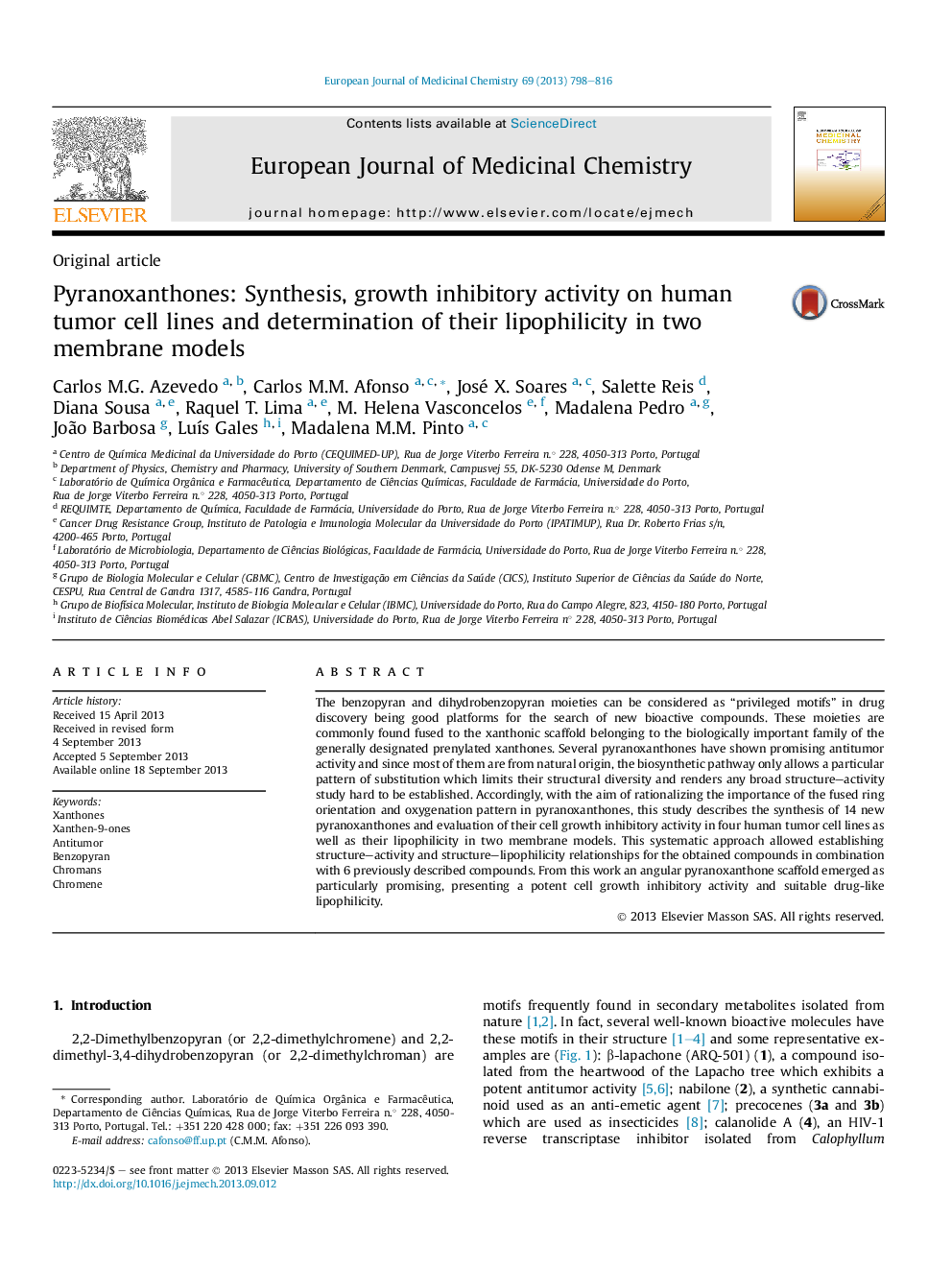| Article ID | Journal | Published Year | Pages | File Type |
|---|---|---|---|---|
| 1399044 | European Journal of Medicinal Chemistry | 2013 | 19 Pages |
•21 pyranoxanthones were synthesized using different synthetic approaches.•Their growth inhibitory effect was evaluated on four human tumor cell lines.•Several pyranoxanthones were active in the HL-60 tumor cell line.•The lipophilicity of the pyranoxanthones was evaluated in two membrane models.•Compound 32 showed to be particularly promising as potential antitumor agent.
The benzopyran and dihydrobenzopyran moieties can be considered as “privileged motifs” in drug discovery being good platforms for the search of new bioactive compounds. These moieties are commonly found fused to the xanthonic scaffold belonging to the biologically important family of the generally designated prenylated xanthones. Several pyranoxanthones have shown promising antitumor activity and since most of them are from natural origin, the biosynthetic pathway only allows a particular pattern of substitution which limits their structural diversity and renders any broad structure–activity study hard to be established. Accordingly, with the aim of rationalizing the importance of the fused ring orientation and oxygenation pattern in pyranoxanthones, this study describes the synthesis of 14 new pyranoxanthones and evaluation of their cell growth inhibitory activity in four human tumor cell lines as well as their lipophilicity in two membrane models. This systematic approach allowed establishing structure–activity and structure–lipophilicity relationships for the obtained compounds in combination with 6 previously described compounds. From this work an angular pyranoxanthone scaffold emerged as particularly promising, presenting a potent cell growth inhibitory activity and suitable drug-like lipophilicity.
Graphical abstractFigure optionsDownload full-size imageDownload as PowerPoint slide
